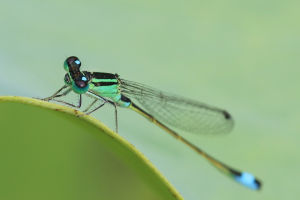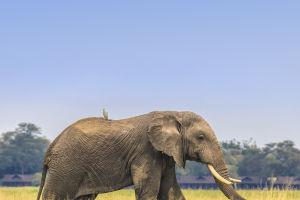Dragonflies are truly fascinating insects with unique and graceful appearance. With their slender bodies and transparent wings, they dance through the air on warm summer afternoons, providing a refreshing coolness to those who observe them.
The life cycle of dragonflies is composed of three stages: egg, nymph, and adult. Interestingly, dragonflies do not go through pupation during the molting process from nymph to adult.
Dragonflies possess a pair of compound eyes that provide them with incredible vision, covering almost all angles except behind them.
Additionally, they can independently turn each of their four wings, allowing them to fly straight up and down vertically, as well as pause and hover midair. Some dragonflies can fly forward at a speed of 100 times their body length per second, with a top speed of 50 kilometers per hour.
Scientists at Harvard University have studied the flight of dragonflies extensively, using high-speed cameras to film their takeoff, prey-catching, and return to their roost, all within 1-1.5 seconds. This unique flight has inspired engineers to dream of creating robots that can fly like dragonflies.
Dragonflies are ectotherms, meaning their body temperature changes with the temperature of their environment. However, they can regulate their body temperature by using the rapid rotation of their wings to increase their temperature when flying in colder weather. They can also bask in the sun to keep warm while resting.
The reproductive process of dragonflies is equally fascinating. Dragonflies are parthenogenetic, meaning a single dragonfly can lay eggs independently. The egg-laying process typically occurs at the surface of the water, where the female dragonfly finds a suitable spot to deposit her eggs.
Dragonflies are carnivorous insects and an essential part of the ecosystem as they prey on agricultural, forestry, and animal husbandry pests such as flies, mosquitoes, midges, and small butterfly moths. As representative aquatic organisms, their larvae can monitor water environment pollution.
Aside from pest control, dragonflies play important roles in ecosystems. They are crucial predators of aquatic life and serve as a food source for many birds and animals, such as spiders.
When they reproduce and lay eggs, dragonflies also provide nutrients for the growth of aquatic plants and algae. As they move their bodies in the water, they disturb the surrounding water flow, promote oxygen circulation in the water, and improve the water quality environment.
However, human activities such as habitat destruction and environmental pollution have caused a significant decline in dragonfly populations in recent years. Therefore, protecting dragonflies and their habitats has become an important task for preserving the ecosystem.
People can help protect dragonflies by reducing the use of pesticides and safeguarding aquatic environments. Establishing more dragonfly sanctuaries is also an effective way to protect these beautiful insects.
Dragonflies are unique and graceful insects that play essential roles in ecosystems. Their distinctive flight and fascinating reproductive process have inspired scientific research and engineering design. Protecting these beautiful insects and their habitats is crucial for preserving the environment and maintaining a healthy ecosystem.


